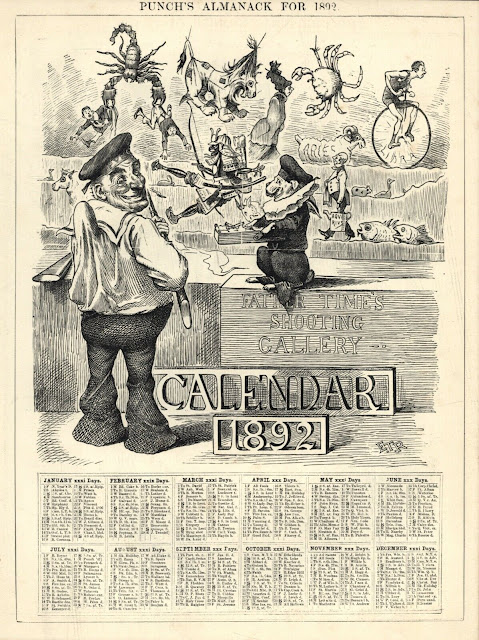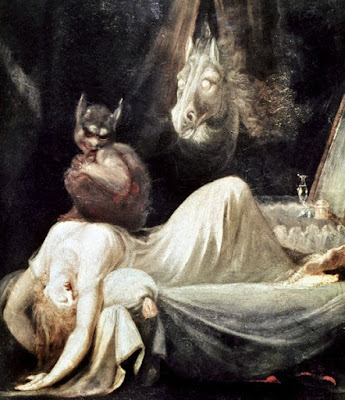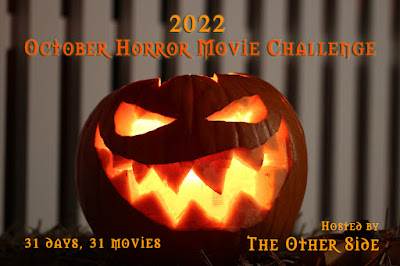Ok, so I have worked through three different versions of BESM. Each one had something to offer my regular Unisystem games and each one gave me a alternate game when I felt the need to recharge my batteries.
Yes, Unisystem pretty much offers everything I need in a system. But playing and reading other games, especially other genres of games, can help me build out the game I am playing. BESM added a need dose of light to my games. Trust me, I have a stack of Horror games that can provide me plenty of dark, Anime games helped me focus on some of the things that horror games often overlook.
One of the issues in my games (at least in the past) was "what does it mean to be human?". I had many characters that were were closer in nature to the monsters they hunted rather than the humans they protected. To help with these issues games like World of Darkness are good, but full of angst that I may or may not want in an adventure where the characters go to the beach on a bright sunny day. Anime games help with those "days off" stories where there is a lull from the action but it is a good adventure for character development.
BESM, and other Anime games, were very influential on my Season 3 game "Generation HEX" in terms of tone, pacing and story. It also helped me see the value in a 2d6 mechanic for Unisystem. BESM 3 only solidified that.
Some Crunch
One of the things I like to do with a new system/game is find some gems and convert them over to what-ever system I happen to be using at the time. Often that is Unisystem.
Unknown/Undeveloped Power
1-5 point Quality
Prerequisite: Approval of Director/Chronicler
Some characters are born with their gifts turned on or readily apparent. These characters my start the game as normal humans only to have their powers or gifts turned on when it becomes dramatically appropriate.
To represent this the player pays a certain amount of Quality points at character creation (usually 1 to 5) to have the Director/Chronicler develop the new power over time as part of the story campaign or all at once when it is needed. The Player and Director/Chronicler need to agree to this. The player pats the points now and the Director/Chronicler gives them the power that costs the amount paid plus 50% rounded up at a later date. This payoff should be no more than two or three episodes. Longer than that should increase the amount of interest paid on the power. The character is loosing potential at the beginning of the game (making them weaker than other characters) for a larger return.
So a character that is to develop magic at some point can pay 3 points now and get a return to 3 + 1.5 = 4.5 rounded up to 5 points later to buy Sorcery/Magic.
The Director/Chronicler must work to make the payoff worth it not just in terms of points, but also in terms of drama.
This selection also works well for younger characters.
Characters
One thing that BESM 2r/3.0/d20 was missing were some iconic characters for me to convert. So I have to turn to it's sister game SAS. And since GoO was a Canadian company I should use one of Canada's finest superheroes.
Mother Raven
Human Witch
This represents Mother Raven at the start of her career. As she progresses she will increase her levels of magic to a max of 8 and increase her skills and loose her recurring nightmares (loss would be something she would have come to terms with). Given that this is "Silver Age" I would imagine she would be "Grandmother Raven" now.
Life Points: 26
Drama Points: 10
Str: 2 Dex: 3 Con: 3 Int: 4 Per: 7 Will: 7
QualitiesAcute Senses (Sight) ("Raven's Eyes")
Attractive
Contacts (The Guard)
Hard to Kill
Iron Mind ("Raven's Will")
Magic (no TK) 6
Nerves of Steel
Supernatural Senses ("Raven's Warnings")
DrawbacksAdversary (Various, in particular General Winter)
Dependent (Daughter)
Honorable
Minority (Ojibwa Native American)
Recurring Nightmare (life without Raven)
Secret (identity Katherine McCloud)
Spell Focus* (All powers require the use of her Raven staff)
SpellsShadow Form, Illusion ("Raven's Tricks"), Darkness, Pocket Dimension, Negate Powers (drains Willpower), Sunkiss (Blindness, LP damage SLx5, SLx8 to vampires)
SkillsAcrobatics 1, Art 5, Computers 1, Crime 2, Doctor 5, Driving 1, Getting Medieval 3, Gun-Fu 0, Influence 5, Knowledge 8, Kung-fu 2, Languages 5 (English, Ojibwa, Crow, Chippewa, Tlingit), Mr. Fix-it 2, Occultism 7, Science 3, Sports 1
From the d20 version:
IDENTITY: Katherine McCloud (Secret, known to Anisinabe)
OCCUPATION: Teacher, speaker, writer, painter, adventurer
FIRST APPEARANCE: Amazing Presentations, Vol. III, #45
FORMER ALIASES: None
PLACE OF BIRTH: Sunset Lake Reservation, Ontario, Canada
AFFILIATION: The Guard
TERRITORY: Empire City
HEIGHT: 5'8" (173 cm)
WEIGHT: 160 lbs. (73 kg)
EYES: Brown
HAIR: Black
The old ways had been abandoned in Sunset Lake Reserve by the time Katherine McCloud was born; it was a familiar story in Northern Ontario. The Ojibwa sank into despair, suffering from poor diet, sedentary lifestyle, and rampant diabetes. The ancestors and spirits of the world were all but forgotten to gambling and alcohol. Katherine excelled in school, but the instability of her home life took its toll. Her father was often gone for months, and they had to take in her mother's mother. Both parents were alcoholics, but her mother would try putting life in order each time father left. Yet whenever he returned Katherine's mother would take him back, beginning anew the cycle of abuse.
By high school, Katherine turned to drinking and drugs as a panacea for the pain and anger she felt, and for the strange visions that plagued her dreams. She dismissed her grandmother's foolish talk of spirits, and refused to admit she was spiralling out of control; Katherine could no longer ignore life when she discovered she was pregnant at 16. She exhibited a supreme effort of will to finally live clean, which her grandmother noted proudly.
Without the alcohol, her grandmother made sense, and Katherine turned to her grandmother's spirits to ease her burden. Drumming circles and sweat lodges brought the image of the Raven, growing ever stronger. As she neared her delivery date, grandmother sent her on a vision quest into the wilderness. The Great Raven appeared, speaking of the need for change. Katherine's role was to become a symbol for her village, for her daughter, for all Anisinabe - the people of the land. She awoke in her mother's house, now a mother herself. Her grandmother taught her to be a good parent, see the spirits, and represent her people. In time, she became a powerful teacher herself, reaching out as a writer, painter, and speaker.
During Katherine's 20th summer, Lady Starbright pursued General Winter across Ontario, until Winter knocked the hero unconscious and deep into Sunset Lake. Katherine desperately struggled to save her while the General's wake turned the village from summer to winter. Raven helped Katherine save Starbright, before both women co-operated to drive Winter off.
Starbright liked Katherine immediately, and offered to teach her. Katherine accepted, knowing she had a greater responsibility. She left her daughter with her grandmother, and let Starbright show her the world. Starbright introduced Katherine, now Mother Raven, to the American Sentinel, Slipstream, and others, while Raven guided Katherine's abilities, teaching her to draw from his power, to create shadows, and cast visions.
An early mission with Starbright against Artificer resulted in tragedy; Artificer lashed out indiscriminately and killed a young Ms. Matthews. Her son, Samuel, forever blamed the women, calling them false heroes; his hatred grew over the years, turning him into Katherine's frequent enemy.
Raven still whispers secrets in his hoarse caw; Katherine learned to take strength from sorrow, and thus faced Starbright's death by joining the Guard. Raven even taught Katherine to touch the sun, as he once did to bring fire to mankind, but only at great need, and at great cost. Now, she travels to protect and teach, but always returns to the one who needs her most: her daughter.
And what is a hero without a super villain. If Mother Raven represents what is best about motherhood and power, then here is the worst.
Bloody Mary
There are many strange and terrible things in the world, but few target innocence so ruthlessly or cruelly as the monstrous Bloody Mary. She has been called demon, fiend, and vampire, but is she truly otherworldly, or just an example of human capacity for evil?
Bloody Mary was first reported as the perpetrator in a nation-wide kidnapping case, where a dozen children from across the United States were abducted. Street kids were whispering, “Bloody Mary got ‘em,” weeks before the FBI had a name. The Baron recognized something supernatural was involved, and helped the FBI. Mary’s plans to use the children as livestock were upset by the Baron, the FBI, and the appearance of Pan & Belle. Mary was defeated, but escaped.
The story of Bloody Mary, however, was told by street kids for years, but no one ever believed them. She was first
called La Llorona by children of Mexican immigrants, and known to stalk children through mirrors. Haitian kids knew she could reach through the tinted windows of Jeeps. She was a demon, or a spirit possessing an evil woman, or even a corruption of the Virgin Mary; she fought with angels, and used children for slaves, living off of their blood and fears.
Blood Mary has been seen several times since then. Mother Raven and Lady of the Lantern teamed up when Mary invaded Empire City, once more chasing her away. Some children say she is building an army of demons, a hellish warmachine powered by the souls of children, to conquer the spirit world. Others believe Mary is mad, perhaps driven insane at the loss of a child, and simply trying to restore her old life. Finally, a few believe she is pure evil, hunting children because she loathes their innocence and can feed off their souls. Many children believe once she’s seen your face, Mary can track you to the ends of the Earth.
In 1997, a doomsday cult in San Francisco, the Temple of Mars, summoned Bloody Mary to tear apart the dimensional veil. They offered 100 refugee children as sacrifice.
Whatever they intended, few seemed to realize the horror they were dealing with. Many died as Mary opened a hellgate, but Pan & Belle appeared and drove her back. Meanwhile, Mother Raven and Slipstream arrived and dealt with the demons ... but during the fight, one incarnation of Belle gave her life to keep the children safe.
The FBI does not know how to deal with Mary, and calls in help whenever she is believed to be involved. The Baron clashes with her whenever their paths cross, but she tries to avoid his territory. He does not know if she truly travels between Heaven and Hell, but has seen her vanish into the spirit realms, and has even seen her personal, nightmare dimension. Mary barely acknowledges these forces, except when they directly interfere with her machinations. She sees most superheroes as bothersome distractions, but regards a few (like Red Phoenix and Sentinel) as hated angels.
Pan & Belle most often crop up wherever Mary is spotted, and much bad blood lies between them. Mary is the embodiment of everything they oppose. She eagerly anticipates the day they, and all the children of the world, lie chained at her feet.
Bloody Mary (Unisystem)
Character Type: Demon? (has Faerie and Vampire like attributes as well)
Attributes: Strength 3, Dexterity 4, Constitution 3, Intelligence 2, Perception 5, Willpower 8
Ability Scores: Muscle 12, Combat 12, Brains 20
Life Points: 55
Drama Points: 10
Qualities: Dimensional Travel (requires reflective surfaces), Fast Reaction Time, Hard to Kill 7, Hypnosis, Immortal, Iron Mind, Nerves of Steel, Regeneration, Supernatural Senses, Telepathy, Vampiric Attack (“Spirit Bleed”, Willpower)*
Drawbacks: Adversary (Various, in particular General Winter), Attractiveness -1, Supernatural form (bloody tears, looks supernatural and evil)
Skills: Getting Medieval 2, Influence 4, Kung-Fu 2, Notice 4, Occultism 8
Spirit Bleed Attack: On any touch-based attack Mary can drain 1 point of Willpower. Victims drained to 1 point are completely under Mary’s control. Anyone drained to 0 become zombies.
Maneuvers
Name Score Damage Notes
Dodge 12 — Defense action
Grapple 12 — Resisted by Dodge
Kick 12 8 Bash
Punch 12 6 Bash
Claws 12 6 Slash
Bloody Mary (Mutants & Masterminds)
PL: 7 (105 pp)
ABILITIES: STR: 11 (0) DEX: 13 (+1) CON: 11 (0) INT: 9 (-1) WIS: 20 (+5) CHA: 13 (+1)
SKILLS: Bluff (+1), Concentration (+5), Diplomacy 1 (+2), Disguise (+1), Escape Artist (+1), Gather Info (+1), Handle Animal (+1), Intimidate 2 (+3), Streetwise 6 (+5), Notice (+5), Search (-1), Sense Motive (+5), Sleight of Hand 2 (+3), Stealth (+1), Survival 10 (+15)
Languages: English, Spanish, Creole, French, Latin, Portuguese
FEATS: Favored Opponent (Children) (1), Fearsome Presence (1), Attack Focus (Melee) (1)
POWERS: Dimesional Pocket [4], Environmental Control (cold) [4], Immunity [2], Mind Control [4], Mind Shield [5], Obscure (Darkness) [4], Shapeshift (animals only) [4], Super-movement (dimensional, requires a reflective surface) [1], Super-senses (innocence, magic, portals, ultravision) [4], Drain (Intelligence & Wisdom) ("Spirit Bleed") [1], Blast ("Soul Wound") [2], Regeneration (Resurrection) [1]
COMBAT: Attack 0 [Unarmed +0 (Bruise)] Defense 10 (10 flat-footed) Init 1
SAVES: Toughness 0 (0 flat-footed) Fortitude 2 Reflex 3 Will 7
DRAWBACKS: Disability (Holy Gound) -4, Noticeble (looks supernatural) -3
COMPLICATIONS: Enemy (Angels, Those that protect children), Obsession (Kill all Children)
Abilities 17 + Skills 7 (26 ranks) + Feats 3 + Powers 79 + Combat 0 + Saves 6 – Drawbacks -7 = 105 / 105
To make these more "Anime" I would alter Mother Raven a bit to be more of a kindly old grandmother type that has a ton of power. Bloody Mary would be more inhuman looking. Abnormally thin with long claws. Something like the Witch in Left 4 Dead.
Next week I want to look at some of the newer games and see what they can offer me.


























